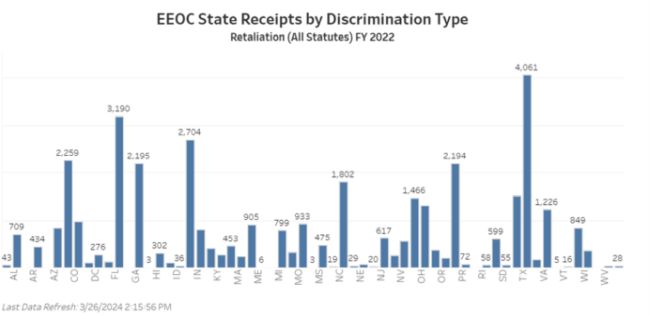Seyfarth Synopsis: The U.S. Equal Employment Opportunity Commission (EEOC) recently released its 2023 Annual Performance Report and a new dashboard highlighting resolved cases. Compared to the prior fiscal year, the EEOC contacted substantially more potential claimants and filed a great number of merits lawsuits in 2023. It also released a new tool called "EEOC Explore" to track litigation statistics across the country.
EEOC Litigation Lurches Forward In Fiscal Year 2023
The EEOC released its Annual Performance Report for fiscal year 2023 that quantified the results of its enforcement of federal anti-discrimination statutes. The report showed a jaw-dropping increase of the EEOC's contacts with potential claimants by over 600,000 in FY 2023 (rising 25% over FY 2022). The EEOC also secured over $440.5 million for claimants with charges and claims against private and public employers last year, which is a substantial increase from FY 2022. And these figures may increase further in FY 2024 – the EEOC's strategy to prioritize systemic discrimination charges led to the filing of 50% more merits lawsuits compared to FY 2022. Chair Burrows emphasized that under her tenure, the EEOC will focus its resources, which included the hiring of nearly 500 attorneys, investigators and other personnel, to respond to an increased demand from discrimination complainants in the workplace. The EEOC also has committed to renewing its scrutiny of reasonable accommodations for pregnant workers in FY 2023, following the passage of the recently enacted Pregnant Workers Fairness Act, and the EEOC began accepting related charges by the end of June 2023.
While the Annual Performance Report does not break out its enforcement metrics against private sector employers, the EEOC makes clear that it will prioritize contact with private sector workers as evidenced by its campaign of hosting community outreach programs across the country.
EEOC Explore – A Data Dashboard
The EEOC also released a new Data Dashboard, which highlights selected resolved cases from the past five fiscal years in recognition of the 60th anniversary of the Civil Rights Act of 1964. The EEOC expanded its library of data visualizations of aggregated charge data, workforce demographic data and limited employer-reported pay data that it plans to supplement in the future.
For example, the EEOC's visualization concerning Charges filed in all regions shows a notable spike in retaliation claims:

Implications for Employers
Employers ignore EEOC filing trends at their peril. By understanding the strategic priorities reflected in the report, employers can better position themselves to avoid the anticipated increase of EEOC charges by staying current on federal anti-discrimination laws, particularly the Pregnant Workers Fairness Act, and maintaining vigilance in their response to requests for accommodation in the workplace.
Employers should also use EEOC Explore to review Charge and Litigation statistics (i) by state and (ii) type of claim made to keep abreast of litigation trends in the states where their employees work to ensure compliance with all federal, state and local laws in those areas.
The content of this article is intended to provide a general guide to the subject matter. Specialist advice should be sought about your specific circumstances.



